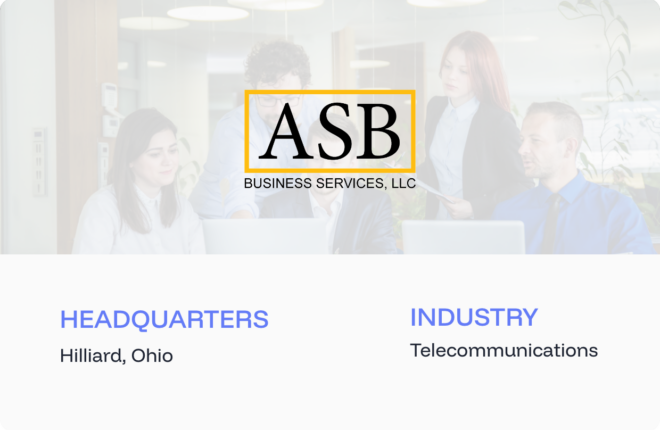Despite the prevalence of accounting-based marketing (ABM) techniques amongst B2B and corporate firms, salespeople are still predominantly dependent on individual leads. They find their own leads, locate contact details, and perform sales outreach on a one-to-one basis, with a “lead” described as a single point of contact.
But the conventional lead-based sales approach is not right for B2B sales associates or companies offering high-value products to company customers. Focusing on one person at a time is not the most effective or successful way to sell B2B for a few reasons:
- B2B and company deals also require several decision-makers whom you need to persuade.
- Inbound leads do not provide any assurance that the person has the authority or decision-making power to conclude the sale.
- When a sole leader says “no” the relationship ends.
- You lose out on selling multiple use cases in a given account.
The solution is account-based sales (or ABS).
In a nutshell, account-based sales are an inversion between inbound and lead-based sales methodologies. Instead of approaching people as leaders and assuming they have the authority to buy from you, ABS’s approach focuses on the account first and foremost—then identifies several possible buyers and decision-makers to reach out to.
Is Account-Based Sales for You?
Account-based strategies reliably deliver on their revenue-enhancing commitments.
But Account-Based Sales (ABS) isn’t for everyone. In reality, the mismatch between your business model and your account-based sales will lead to more harm than good. It depends on the buyer’s journey and the buying signals of the consumers you engage in.
As a rule of thumb, account-based sales is a good match for B2B businesses where:
- Sales interactions are dynamic and require longer periods.
- Major acquisitions require the consent of a variety of decision-makers.
- The opportunities for up-selling, cross-selling, etc. are often high.
How to Create a Target Account List
First, you have to formulate the kinds of accounts you’re going to reach, the users you’re going to connect to inside those accounts, and the different types of content you’re going to use to engage them. Once you have an idea of your targets, you can create an actual user list.
ABS experts propose the development of a target account list for separate levels of focus. Your team can devote a separate amount of energy, customization, and focus to each, with the smallest, highest-value level getting the most and the largest, low-value level receiving less.
Usually, the first level consists of 20 to 50 accounts. In-depth analysis and one-to-one personalized outreach are offered to the accounts at this stage. Sales, Sales Development, Marketing, and executive leaders are involved in bringing this company together.
The second level contains roughly 200 accounts. They are personalized based on their industry and their personalities. SDRs communicate with them by phone, email, and social media, while the marketing team uses ads and events. These multi-touch campaigns span several weeks.
Use data intelligence tools to create a highly targeted account list. SalesIntel is both an accurate and easy-to-use data intelligence tool for prospecting, even for those with zero B2B experience with list building.
Structuring Your Sales Team for Account-Based Sales
The standard ABS team consists of members from sales, marketing, customer support, and solutions/implementation departments.
Here are the major roles:
Account Executive: conduct internal meetings, form the account strategy, become the primary contact person with the prospect, and work to become their trusted advisor.
Sales development representatives: Studies the account and updates the CRM to create personalized messaging for multiple customer stakeholders.
Marketer: Develops overall playbooks, content materials, and messaging, coordinates marketing campaigns, monitors the success of the program.
Support representative: keeps the team up-to-date on account progress and bottlenecks when they arise.
Industry Marketer (optional): If the business targets multiple industries, the subject matter specialist informs the overall team and ensures that the message and strategies are appropriate, reliable, and technically sound.
Product Manager (optional): If it’s a SaaS company, a product manager keeps the team and the client aware of future product developments and improvements.
Sales managers usually propose a 1:1 ratio for SDRs, AEs, and CSMs. The average ratio, however, is one SDR to 2.5 AEs. Larger companies tend to have more AEs for every one SDR, according to a recent TOPO report.
So what ratio are you supposed to choose? It depends on the age, scale, and goals of the company.
Align the ABS to the Customer Journey
Although they can have varying needs, each stakeholder in a company normally goes through the same stages of a buyer’s journey. Depending on the system you use, this journey usually entails knowledge, curiosity, concern, purchasing, and activism stages.
For example, the interest of the Chief Financial Officer (CFO) may be caught by a message that illustrates the impact of a product on lowering operating costs.
Meanwhile, a message that introduces a product as a competitive advantage within a niche could push the CEO to engage.
The trick is to collect sufficient consumer data for each stakeholder. Then, derive insight from these details and creatively involve these decision-makers.
Implementing ABS in Your Organization
Here is a 6-step process to get started in account-based selling.
Step 1: Determine the cultural role of ABS in your business
Team attachment to traditional sales methodologies can cause resistance to any change from their familiar workflows. Shake the reluctance by showing the full benefits of the transition.
Stage 2: Build an optimal consumer profile (ICP)
The top management has to carefully study and categorize its customers and then define the best company characteristics.
Using these key characteristics to help you build productive consumer segmentation:
- Industry
- Annual Revenue
- Location
- Employee Strength
- Technographic Data
Once you have all these data points, you can build the Ideal Customer Profile.
Step 3: Establish the buyer people your team expects to invest in.
Identify personas who are key stakeholders, influencers, and decision-makers in your target businesses.
Once you have your target personas, you can set up the relevant employees to execute the ABS strategy as a single team. Define roles and expectations for each team member. Your ABS team should break the mold of strict sales, marketing, and customer success teams.
Step 4: Identify and set relevant metrics to assess the performance
Popular account-based revenue metrics shall contain the following:
- Customer Acquisition Cost (CAC) – the cost of converting a single account on average.
- Average Deal Size (ADS) – the average volume of your sales or service arrangement with your clients.
- Lifetime Value (LTV) – the value generated by a consumer over time.
But finally, it’s up to you to decide the metrics you need to monitor results. Based on what you are told by the data, you will find your strengths and weaknesses.
This will help you decide the sales tools, marketing assets, sales enablement, etc. you need to meet the success benchmarks.
Step 5: Create the required ABS resources
Messaging and content creation in account-based sales is highly customized by the target account and the decision-maker. Spend time researching the goals and pain points of each stakeholder. Sales and marketing should work together to develop compelling content for each milestone in specific customer journeys.
Step 6: Execute
The greatest strategy in the world means nothing until you do it.
Create positive customer experiences and orchestrate their progress by hyper-customized solutions. Connect your contribution to their client journey—providing service at any point of the cycle.
And remember to monitor the results because you need to know how to refine the process and boost long-term revenue.
How SalesIntel Can Strengthen Your ABS?
Technology will allow you to execute account-based sales more accurately and on a wider scale.
You can start with add-ons and APIs that can boost your current CRM accuracy and data. From here, you can improve the workflow with the right sales automation software to make it repeatable.
You aim to build a custom sales tech stack that holds Sales, Marketing, and Consumer Success on the same page, with the same data and customer knowledge.
SalesIntel helps you to add various data points to the latest B2B data and browser lists. You can access the industry’s most reliable and detailed B2B data, including firmographic and technographic data about your ideal customer profile (ICP) along with customer Intent Data access.
Access Advanced-Level B2B Data:
Access to millions of human-verified company data and contact details. Get in touch with a few clicks from our data portal to take your prospecting to the next level.
Get Access to Work Mobile Numbers:
Work Mobile Numbers have a 7X higher connectivity score. SalesIntel is the industry leader in mobile number data, so you can get to the decision-maker right away and use your time for more critical things than sitting for the switchboard operator or leaving a voicemail.
Track Buying Signals:
You can find and reach companies currently searching for a solution that you can easily push into the buying phase and shorten the sales cycle. Uncover prospect’s buying signals by learning their interests so you know when to reach out.
Final Thoughts
As you can see, an account-based sale is not a small undertaking. It’s a tactic that needs planning and coordination throughout the whole organization. But, don’t get too anxious. No one jumps into a new plan without finding a few obstacles in the way.
With strong alignment, awareness, and access to data, you can turn to account-based sales. When you start getting the results, you’ll ask yourself why you didn’t make the move sooner.
Our comprehensive B2B data intelligence platform is the resource you need to achieve your greatest sales success.






